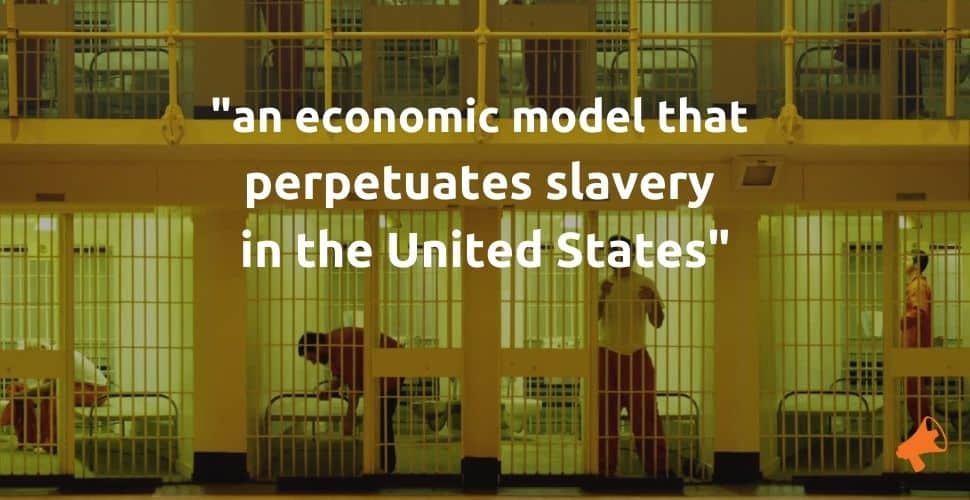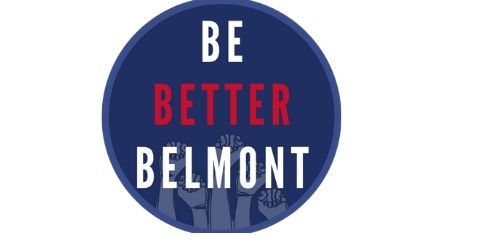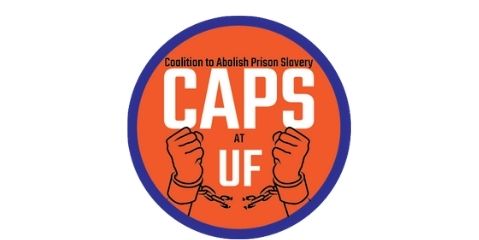Watch our Instagram live conversation with Be Better Belmont.
Forced labor should not be legal in the United States. But it is, and it’s rife in the U.S. prison and immigration detention industry, with public and private actors to blame.
Under the 13th Amendment, involuntary servitude remains legal as punishment for a crime. However, even those who are not convicted of crimes – including immigrant detainees – have allegedly been subjected to forced labor behind bars.
The U.S. public and private prison and immigration detention industry has long been built to exploit profit from those who are incarcerated who, in some cases are forced to work under threat of punishment or penalty, in contravention with international standards.1
One of the core problems with contracting comes in the form of the Prison Industry Enhancement Certification Program (PIECP), where private companies who have contracts with government-run prisons can get away deducting up to 80% of their detainees’ wages, meaning they work for almost no pay, creating an economic incentive for this system. 2
Fair pay, equivalent to what would be earned on the outside, is not only an indicator that labor is free, but the savings made are crucial for detainees’ recovery on release, as well as enabling them to afford basic necessities from the commissary.
This is at worst an economic model that perpetuates slavery in the United States. The 13th Amendment of the U.S. Constitution, which abolished slavery, in fact allows it to be used as a method of punishment for crime. On dismantling the historical system of slavery, this created space for the continued exploitation of African Americans and now other discriminated groups, largely from poorer migrant communities, to be essentially trafficked into the prison and detention system for labor exploitation under the control of private companies.3
We must stop this economic slavery model!
Case in point is the alleged appalling treatment at the Santa Rita Jail in Dublin, California, those whom were incarcerated are suing Alameda County, Sheriff Gregory Ahern, and multinational food and facility services company Aramark, in a federal court for forced labor. 4
The victims say they are subjected to forced labor because the sheriff’s deputies threatened them with solitary confinement or longer sentences if they refused to work.
What’s more, they allege that Aramark “receives an economic windfall as a result of the uncompensated labor of prisoners.”
“Santa Rita and therefore the county are stealing the wages that have been earned as a result of the work of the prisoners,” argues Dan Siegel, one of the lawyers representing the plaintiffs. “We speculate that it’s at least millions.”
The Santa Rita Jail case isn’t an anomaly; it’s part of a broader system of injustice against those who are incarcerated and immigrant detainees across the United States.
Several lawsuits have been brought against private immigration detention centers over claims of human trafficking, and there is promising news. The U.S. Court of Appeals for the Eleventh Circuit recently found that the Trafficking Victims Protection Act applies to the Stewart Detention Center in Georgia – the site where immigrant detainees allege they were subjected to forced labor.5
According to the complaint, victims suffered “serious harm, including the deprivation of privacy and safety in open living quarters, referral for criminal prosecution, and, ultimately, the sensory and psychological deprivation of their humanity resulting from solitary confinement. Under these circumstances, no labor is voluntary—it is forced.”
We are thus asking all local governments and private companies to comply with the Trafficking Victims Protection Act and stop profiteering from forced labor and slavery in public and private prisons. Even when convicted, incarcerated people are protected from slavery-like practices under international law and should be paid fairly for voluntary work performed.
Join our call and help send a strong signal to U.S. public and private prisons that they can’t get away with forced labor behind bars.
Have questions about the link between prison labor and modern slavery? Learn more about it here.
Notes:
- https://www.ilo.org/empent/areas/business-helpdesk/faqs/WCMS_DOC_ENT_HLP_FL_FAQ_EN/lang–en/index.htm#Q3 ↩
- https://bja.ojp.gov/redirect-legacy/Publications/PIECP-Program-Brief_2018.pdf ↩
- https://eji.org/news/history-racial-injustice-prison-labor/ ↩
- https://www.motherjones.com/crime-justice/2020/01/alameda-santa-rita-jail-aramark-unpaid-wages-lawsuit/ ↩
- https://www.law.com/dailyreportonline/2020/03/02/11th-circuit-keeps-alive-claims-of-forced-labor-at-private-south-georgia-detention-center/ ↩





Make your voice heard
Comment
42
Share this petition